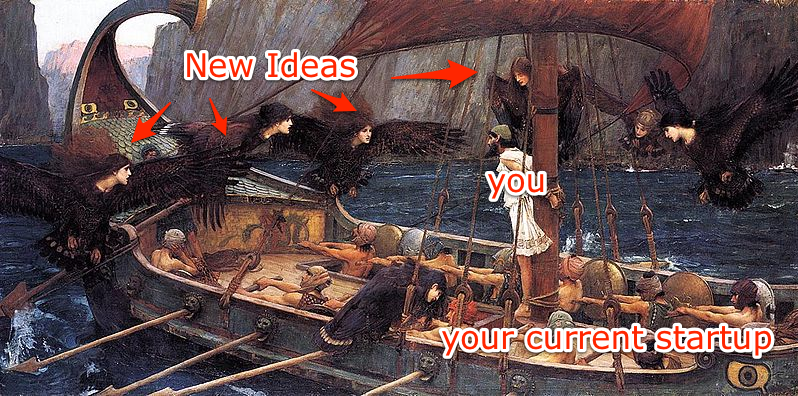Vinicius Vacanti is co-founder and CEO of Yipit. Next posts on how to acquire users for free and how to raise a Series A. Don’t miss them by subscribing via email or via twitter.
Six months after leaving our jobs to start Yipit, Jim and I realized we had made a mistake: we shouldn’t have picked each other as co-founders.
Jim and I trusted each other and we were working really well together; but, it became painfully clear that we needed a technical co-founder. We had made the critical mistake of starting a company with someone who didn’t have complimentary skills. We were too similar to each other.
We tried to find a technical co-founder but it was hard to convince a great technical co-founder to join two “business guys” with no start-up experience. So, we went to Houston’s, our favorite serious business meeting restaurant, and made the decision that Jim would learn front-end development and I would become our temporary technical co-founder.
I had taken a few computer science courses in college but had never built a website nor coded in 7 years. Six intense months later, I had learned how to build our prototype. The code wouldn’t be scalable, but it would be good enough for us to get traction and attract real engineers to join our team.
- I proposed a panel for SXSW entitled “Can’t Find a Technical Co-Founder? Become one” based on my experience. If you like it, vote for it!
Meanwhile, Jim, despite having very little technical background, taught himself HTML/CSS and jQuery in a few months. Another major key for our early success is that Jim became very adept at using Mechanical Turk and outsourced manual processes. We used those skills to quickly solve what would otherwise be very complicated technical challenges that would have set us back months.
Three Important Characteristics of a Great Co-Founder
So, having had the chance to experience picking a co-founder and having met many co-founder teams, I’ve come to appreciate three very important characteristics an entrepreneur should look for when choosing a co-founder.
- A friend. Your co-founder should be someone you’ve been friends with for a while because you need to really trust your co-founder not to give up on you or sabotage the start-up. Jim and I had been friends for five years. There were serious bleak times on our journey building Yipit and, truthfully, one of the main reasons we kept going was blind loyalty to each other. We had made serious sacrifices to work together and neither one of us wanted to be the one to let the other down by giving up.
- Previously worked together. Just because someone is a good friend doesn’t mean you will work well together. Making matters worse, it’s really hard to predict which of your friends will be good co-workers. Fortunately, Jim and I had worked together before in college and for a summer after college.
- Complimentary skills. This is the toughest one. You tend to be friends with people who are just like you but your start-up doesn’t need two co-founders with the same set of skills. I always cringe when I hear three friends who all used to be consultants trying to start a company. As you’ve read above, Jim and I were really guilty of this. As far as web start-ups go, a product manager and a developer seem to be the ideal pairing.
There are way more things to take into consideration like fundraising philosophy, outcome expectations, domain expertise, start-up experience. But, it all starts with the three above.
Also, I’m sure someone in the comments will say: “I just found someone on Craigslist and we sold our company to Google.” Don’t listen to them, they were lucky that the person worked out. More often then not, those start-ups are disaster stories that you never hear about. Startups are full of risk, if you’re not going to mitigate the risks you control (like picking a co-founder), your chances of success will go down drastically.
How to Find that Co-Founder
Lastly, I know that most people’s college roommate wasn’t an awesome CS major or an established product manager. That makes it tough to find a co-founder matching the characteristics I mentioned above. For those of you, I recommend the following:
-

Work at a growing, successful startup. It’s the place where product managers and engineers become friends and learn how to work together. This is one of the main reasons why so many successful startups are born from perviously successful startups like PayPal and why I’m excited for Foursquare’s, Hunch’s, and Gilt’s progeny here in New York
- Work on several small projects. If you don’t want to wait, I recommend working on a few very small projects with several potential co-founders with complimentary skills. Hopefully, through the course of working on the project, one of them becomes your friend and you realize you work well together.
- Go it alone. If you’re a technical person, this is much easier. If you’re a product manager, either teach yourself how to build your prototype or hire a programmer to do it. Once you get traction, you’ll be able to attract awesome people.
Picking a great co-founder is really hard. It’s a tough decision that has serious consequences for your start-up. Please take the time to choose wisely.
Vinicius Vacanti is co-founder and CEO of Yipit. Next posts on how to acquire users for free and how to raise a Series A. Don’t miss them by subscribing via email or via twitter.




 Vinicius Vacanti is co-founder and CEO of Yipit. Next posts on how to acquire users for free and how to raise a Series A. Don’t miss them by
Vinicius Vacanti is co-founder and CEO of Yipit. Next posts on how to acquire users for free and how to raise a Series A. Don’t miss them by 





